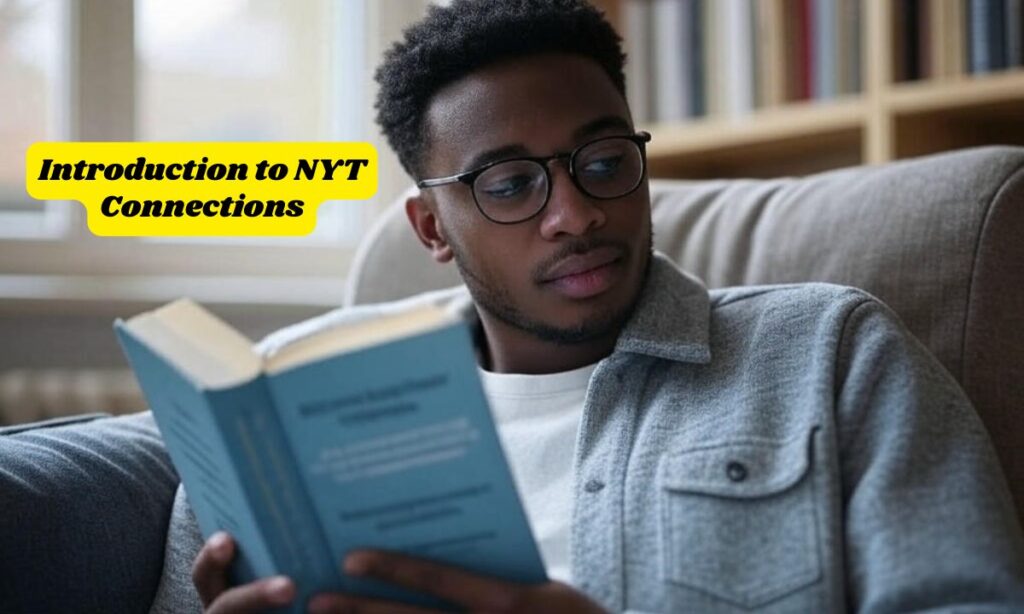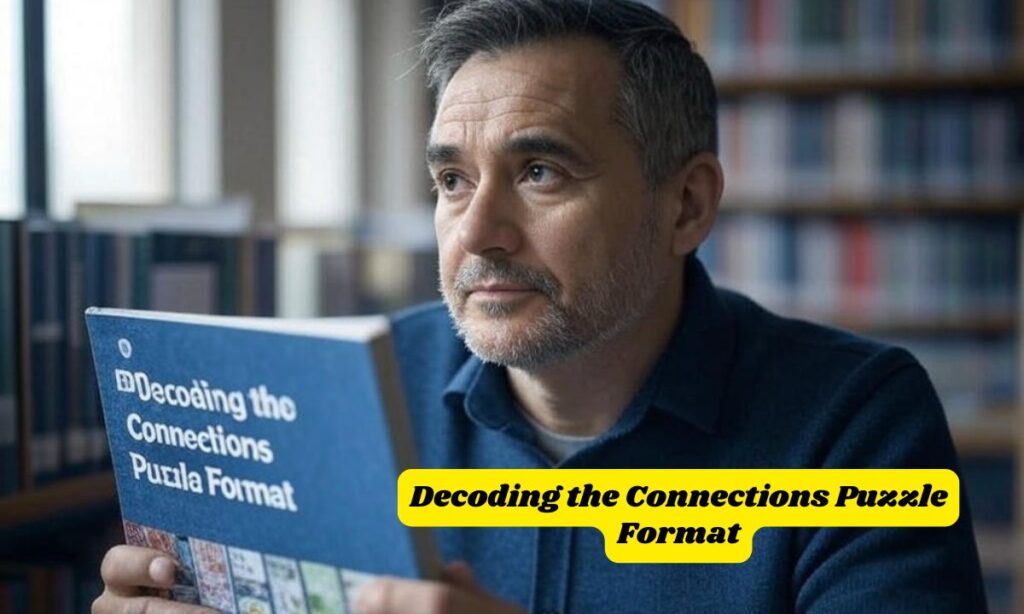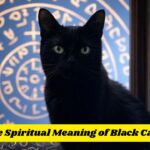Are you stuck on today’s NYT Connections puzzle? You’re not alone. Thousands of players turn to Mashable for that perfect hint that unlocks the puzzle without spoiling the fun.
In this comprehensive guide, we’ll explore how Mashable’s hint system works, why it’s become the go-to resource for puzzlers, and how to use these hints strategically to improve your solving skills rather than simply revealing answers.
Introduction to NYT Connections
NYT Connections burst onto the puzzle scene in 2023 and quickly became a daily obsession for word game enthusiasts.

Created by puzzle master Wyna Liu, this deceptively simple game challenges players in unique ways.
- The game presents 16 words that must be sorted into four distinct categories of four words each.
- Unlike Wordle, Connections tests your ability to think laterally and identify relationships between seemingly unrelated words.
- The game requires strong pattern recognition skills and a broad knowledge base.
- Each day brings a fresh puzzle with unique word combinations and themes.
- The difficulty increases throughout the week, with Monday puzzles being easier than weekend challenges.
The game features four color-coded difficulty levels that indicate both challenge and point value:
- Yellow (Easiest): 1 point – Obvious categories like animals or foods
- Green (Medium): 2 points – Related concepts or fields
- Blue (Challenging): 3 points – Word relationships or usage patterns
- Purple (Most Difficult): 4 points – Obscure or punny connections
Decoding the Connections Puzzle Format
Understanding the mechanics of NYT Connections helps players approach the puzzle more strategically.

- Each puzzle presents a 4×4 grid containing 16 words that must be sorted into four groups.
- Players select words they believe belong together and submit their grouping for verification.
- The game limits players to four incorrect attempts before failing the puzzle.
- The daily reset happens at midnight Eastern Time, giving players a fresh challenge each day.
- Each puzzle has a unique number, which Mashable references in their hint articles.
Common patterns in puzzles include:
- Word associations where terms relate to a common theme
- Thematic clusters of items belonging to a larger category
- Linguistic tricks including homophones, double meanings, or puns
- Cultural references spanning movies, songs, books, and pop culture
- Word relationships where terms function similarly in grammar or usage
- Semantic patterns that connect words through their meanings rather than spelling
READ THIS BLOG: Chef Gotxen Godolix: The Culinary Revolutionary Transforming Modern Gastronomy
Mashable’s Approach to Connections Hints
Mashable has developed a sophisticated system for providing NYT Connections hints that balances assistance with preservation of the solving experience.
- Their tiered hint system offers progressively more revealing clues as you need them.
- Hints are designed to guide thinking rather than simply provide answers.
- Mashable publishes new hints within hours of each puzzle’s release.
- Their approach aims to improve players’ pattern matching abilities over time.
- Hints are written to avoid accidental spoilers while being genuinely helpful.
Mashable’s graduated hint system includes:
- Category hints: Vague descriptions of what connects the words
- Word pattern hints: More specific guidance about relationships
- Partial answers: One or two words from each category
- Complete solutions: Full answers for those truly stuck
This approach lets players choose exactly how much help they need without spoiling the entire puzzle experience.
Breaking Down Mashable’s Hint Structure
Mashable structures their Connections hints carefully to maximize usefulness while preserving the challenge.

- Category clues form the foundation of their hint system, providing general direction without explicit answers.
- Instead of directly stating “Types of trees,” Mashable might hint: “These could provide shade in your backyard.”
- Word pattern hints point out structural elements like “Words that can follow ‘snow'” or “Terms containing double letters.”
- Visual presentation enhances accessibility with bold text for category hints and color-coded sections matching the game’s difficulty levels.
- Collapsible sections prevent accidental spoilers, allowing readers to gradually reveal more information.
Mashable employs disambiguation techniques to clarify when words have multiple meanings:
- They specify which definition of ambiguous words applies to the category.
- They note when seemingly related words actually belong to different groups.
- They explain subtle distinctions between similar-looking categories.
This structured approach helps players overcome common mental blocks while still experiencing the satisfaction of solving the puzzle themselves.
Real Examples of Mashable Hints in Action
Mashable hints create bridges between complex concepts and everyday understanding. When implemented effectively, they transform abstract ideas into relatable, shareable content that resonates with diverse audiences.
These real-world examples demonstrate how mashable hints drive engagement, simplify learning, and spark meaningful conversations across digital platforms.Retry
Yellow Category Example (Easiest)
For a yellow category containing MAPLE, OAK, PINE, and REDWOOD:
- Category Hint: “Look for things that provide shade in parks”
- Word Pattern Hint: “These are all examples of something that grows from the ground”
- Partial Answer: “MAPLE and OAK belong in this group”
This progression shows how Mashable gradually narrows the focus from general to specific. The first hint points to outdoor items. The second hint eliminates non-plants. The partial answer confirms the pattern of tree types.
Purple Category Example (Hardest)
For a purple category containing DIES, LIES, PIES, TIES:
- Category Hint: “These words have something in common in how they sound”
- Word Pattern Hint: “Pay attention to the ending sound of each word”
- Word Pattern Hint 2: “These all rhyme with a common word describing vision”
- Partial Answer: “DIES and TIES belong in this group”
This example demonstrates how Mashable handles the challenging phonetic patterns in purple categories. The hints progressively guide players toward recognizing the relationship without immediately revealing the answer.
Difficult Mixed Case
For a blue category containing CAST, PRINT, STAMP, MOLD:
- Category Hint: “Think about creating multiple copies”
- Word Pattern Hint: “These words can all function as both nouns and verbs”
- Word Pattern Hint 2: “These all relate to manufacturing processes”
- Partial Answer: “CAST and STAMP belong in this group”
This example highlights how Mashable handles words with multiple meanings. The hints help players focus on the specific definition relevant to the connection—in this case, methods of reproduction or duplication.
Advanced Techniques for Puzzle Solving
Beyond just using Mashable’s hints, experienced players employ sophisticated strategies to tackle Connections puzzles more effectively.
- Pattern recognition strategies involve looking for common structures in the words:
- Check for shared word length patterns
- Examine whether words belong to the same part of speech
- Look for common prefixes, suffixes, or letter patterns
- Consider alphabetical positioning or numerical relationships
- Word association techniques help uncover less obvious connections:
- Try creating sentences using each word in the same position
- Consider idiomatic expressions containing the words
- Think about cultural contexts where these words commonly appear
- Examine whether words can combine with a common term
- Elimination methods work backward to solve puzzles:
- Identify the most obvious group first
- Remove those words from consideration
- Look for patterns among remaining words
- Repeat until all groups are identified
- Context analysis helps with ambiguous words:
- Consider multiple meanings of each word
- Evaluate which definition connects to other words
- Remember that wordplay and puns often appear in harder categories
- Think about both literal and figurative meanings
READ THIS BLOG: The Spiritual Meaning of Itching Ears: What Your Body Might Be Telling You?
When and How to Use Mashable’s Hints Effectively
Strategic hint usage can enhance your puzzle-solving skills over time rather than becoming a crutch.
- The progressive hint strategy works like this:
- Attempt the puzzle completely on your own first
- If stuck after two incorrect guesses, check category hints only
- Make another attempt based on these hints
- If still stuck, check word pattern hints
- Only check partial or complete answers as a last resort
- Identify your mental roadblocks to determine when hints are appropriate:
- Fixation block: When you can’t see beyond an incorrect pattern
- Vocabulary block: When words have meanings unknown to you
- Conceptual block: When the category itself is unfamiliar
- Cultural reference gap: When you’re missing needed cultural context
- Learning from hint patterns improves your skills for future puzzles:
- Notice which categories consistently trip you up
- Pay attention to recurring themes in Mashable’s hints
- Keep a puzzle journal tracking which hints were most helpful
- Review missed connections to strengthen pattern recognition
Mashable’s Hint Community and Resources
Mashable has fostered a vibrant community around their NYT Connections hints that extends beyond just the daily articles.
- Discussion forums and comment sections under hint articles create spaces for:
- Sharing alternative solving approaches
- Discussing particularly clever or difficult connections
- Helping fellow puzzlers without revealing full answers
- Social sharing features integrate with platforms like:
- Twitter (#NYTConnections)
- Reddit (r/NYTConnections)
- Facebook (NYT Connections Fans groups)
- User contribution system allows readers to:
- Suggest alternative connections
- Point out especially tricky word combinations
- Share their solving times and strategies
- Historical hint archives provide valuable resources for:
- New players learning the game
- Anyone looking to practice on past puzzles
- Researchers studying taxonomies of puzzle design patterns
Comparative Analysis with Other Hint Sources
While Mashable leads the field, several other sources provide Connections hints with distinctive strengths and limitations.

- NYT’s official hint system offers:
- Guaranteed accuracy (coming from the puzzle creators)
- Minimal spoiler risk with their single-hint approach
- Integration directly within the game interface
- However, many players find it too limited and sometimes too cryptic
- Reddit’s r/NYTConnections community provides:
- Crowdsourced hints with multiple perspectives
- Real-time help through comment threads
- Creative alternative groupings not considered by developers
- The downside is variable quality and frequent accidental spoilers
- Twitter hint accounts offer:
- Extremely concise hints that fit Twitter’s format
- Quick publication, often beating other sources
- Interactive hint-giving through replies
- But they lack the depth and nuance of Mashable’s approach
- Independent puzzle sites generally have slower publication times but sometimes offer unique perspectives:
- Some focus on visual representations of connections
- Others emphasize linguistic analysis of patterns
- A few provide video explanations of solving processes
This comparison highlights why many players prefer Mashable’s balanced approach combining timely publication, depth of analysis, and community engagement.
Tips from Connections Masters
Consistent perfect scorers have developed effective strategies for tackling even the most challenging puzzles.
- Timing strategies play a crucial role:
- The “two-minute rule”: If stuck for over two minutes, shift approach completely
- Category scanning: Spend 30 seconds initially just identifying potential categories
- Word relationship timing: Allocate time based on word familiarity and difficulty
- Category recognition shortcuts help identify patterns quickly:
- Look for words that share the same number of syllables
- Notice words that all begin or end with the same letter
- Identify words that all fit a particular sentence structure
- Check for words that could all precede or follow another word
- Memory-building exercises improve long-term performance:
- Review missed connections daily to reinforce patterns
- Create personal category lists from past puzzles
- Practice creating your own Connections-style categories
- Build a mental library of common connection types
- Visual mapping techniques aid spatial thinkers:
- Arrange words physically (or mentally) in different groupings
- Use color-coding in notes to track potential matches
- Draw connecting lines between words that might be related
Troubleshooting Common Connections Challenges
Even with Mashable’s hints, certain puzzle challenges consistently trip up players.
- Dealing with split groups and red herrings requires vigilance:
- Split group example: Words about weather spread across multiple categories
- Red herring example: Words that rhyme but belong to different groups
- Strategy: Before committing to a group, check if each word might fit multiple patterns
- Managing limited attempts effectively:
- Never waste an attempt on a group you’re uncertain about
- Always verify your group contains exactly four words
- Use the process of elimination on your final attempt
- Save one attempt for the easiest (yellow) group if possible
- Overcoming frequent stumbling blocks:
- Homophone confusion: Words that sound alike but have different meanings
- Category overlap: Words that could fit multiple themes
- Cultural knowledge gaps: References outside your experience
- Thematic clusters that seem to contain more than four words
- When to restart vs. when to use hints:
- If you’ve made multiple attempts with no success, check Mashable’s category hints
- If you’ve identified one group but can’t find others, use word pattern hints
- When down to your final attempt, consider partial answers
- If truly stuck, stepping away from the puzzle for an hour often helps
Frequently Asked Questions
Where exactly can I find Mashable’s NYT Connections hints?
Mashable publishes daily Connections hints in their Games section. The URL typically follows the format: mashable.com/article/nyt-connections-hints-[puzzle-number]. They’re also accessible through Mashable’s homepage and via Google search for “Mashable NYT Connections hints today.”
Are Mashable’s hints available for free?
Yes! Unlike some NYT content, Mashable’s hints are completely free. They don’t require a subscription or account creation. This accessibility has contributed to their popularity among Connections players.
How soon after a new puzzle releases does Mashable post hints?
Mashable typically publishes hints within 3-4 hours of a new puzzle’s midnight ET release. For especially difficult puzzles, they sometimes publish updates with additional clarification later in the day.
Does Mashable provide hints for past puzzles?
Yes, Mashable maintains an archive of hints for all previous Connections puzzles. This resource is valuable for players working through the backlog or studying pattern types.
How does Mashable create their hints?
Mashable’s gaming editors solve each puzzle independently. They then craft hints based on the solving process, identifying which aspects might trip up players while avoiding direct spoilers.
Conclusion
Mashable’s NYT Connections hints have transformed how thousands approach this challenging puzzle, striking the perfect balance between assistance and autonomy. The ultimate goal isn’t just solving today’s puzzle it’s developing the pattern recognition and lateral thinking skills that make future challenges easier.
With Mashable’s thoughtfully designed hint system and consistent practice, you’ll soon be mastering even the trickiest purple categories without assistance. Remember: the journey to becoming a Connections master is about building skills, not just getting today’s answers.

SEO expert focused on boosting online visibility and driving organic traffic. Passionate about data analysis, strategy, and the latest digital marketing trends.
















